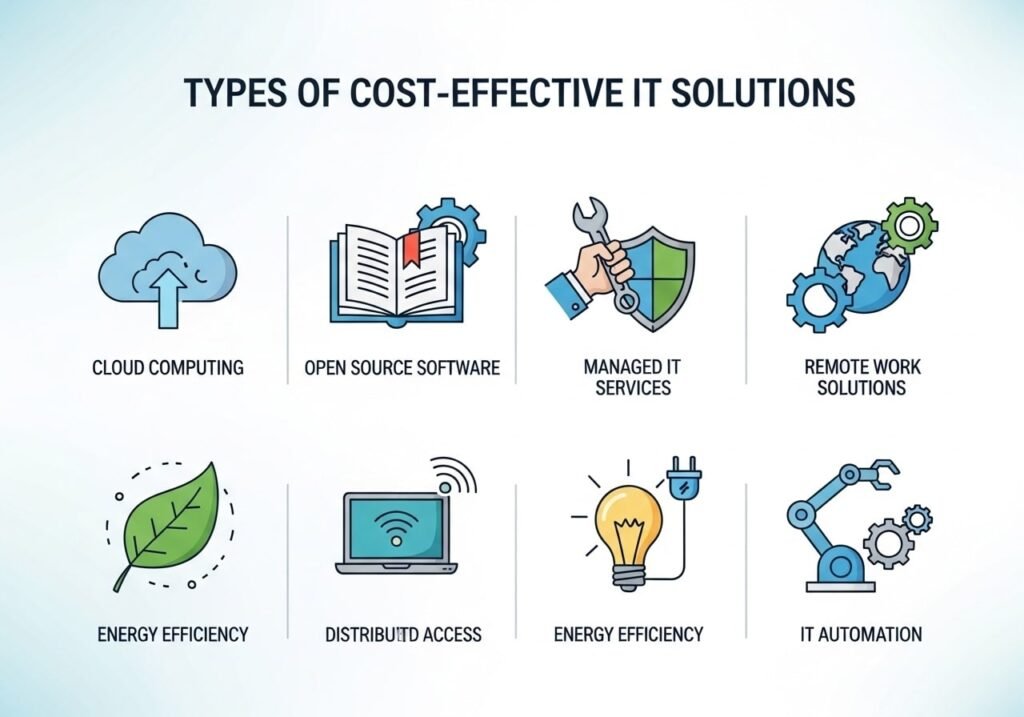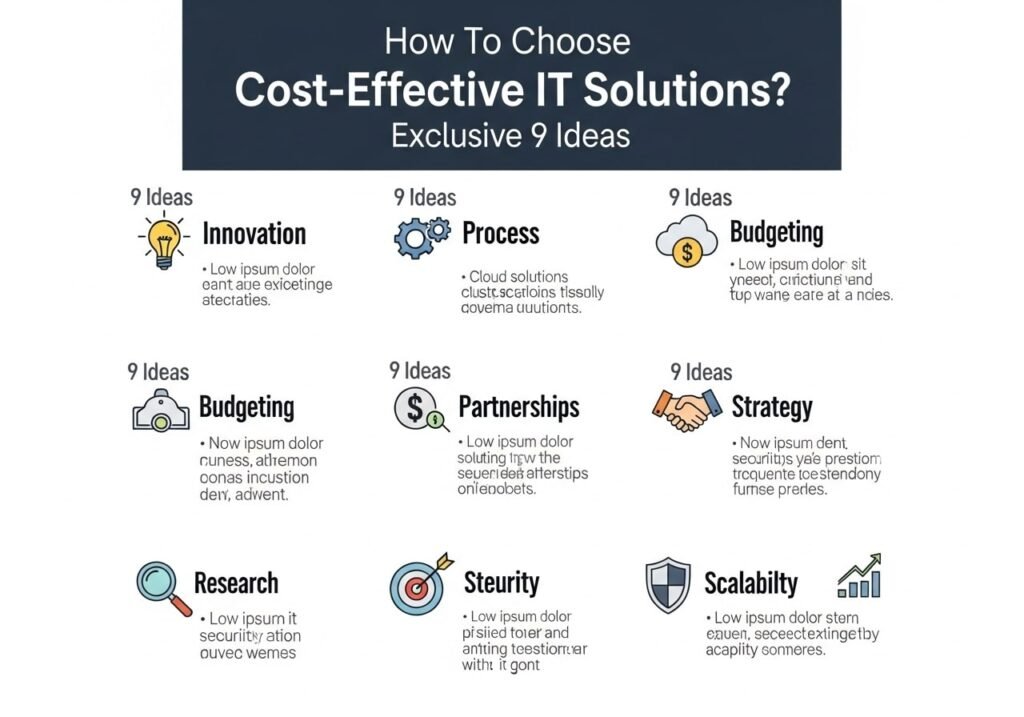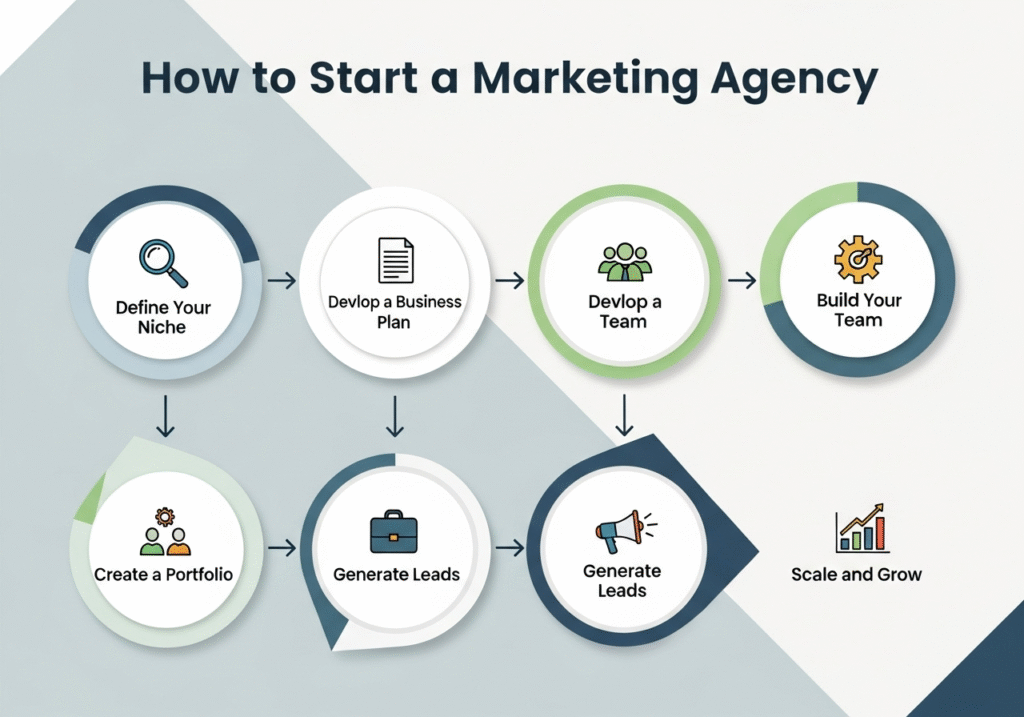Cost-Effective IT Solutions:
The Real Alternative for Business Amid the rapid transformation in the current digital arena, enterprises are increasingly seeking efficient ways to stay competitive yet reducing costs.
And one of the best ways of doing that is with affordable IT solutions. These are tools and technologies that businesses need to be able to operate more effectively, run efficiently, and innovate without wasting money.
In this article, we will discuss cost-effective IT solutions, how businesses can adopt them, and what they entail. We will also look at some possible plays and options for companies to be able to afford a more efficient IT infrastructure.
What Are Cost-Effective IT Solutions?
Affordable IT services are any technology, tool, or methodology that offers companies value but at a reduced cost. These solutions commonly aim to optimize IT resources already in play, eliminate unnecessary expenses and maximize the return on technology investment (ROI).
Businesses can increase productivity and efficiency while being cost-effective, and remain competitive without investing in expensive technologies by utilizing affordable IT solutions.
Examples of low-cost or budget IT solutions include cloud-based software, open-source tools and managed services, approaches that make use of virtualization technology and a variety of types of automation.
For our solutions, the key principle is doing more with less, investing in technology where it makes sense to get that “bang for your buck” long term.
Businesses Demand Affordable IT Solutions, Only?
In the past, money was likely no object for businesses and their IT services provision. But we live in a very different kind of business world today – one that is ruthlessly focused on cutting costs.
Limited budgets, tough economic times, and competitive pressures require businesses to find cost-effective IT solutions for their requirements. Here are a few reasons why value IT solutions are important for today businesses:
Reduce Operational Costs
By utilizing cost-effective IT services, operational costs can be reduced when the fat is trimmed off your budget. Cloud computing, for instance, eliminates the requirement for costly on-premises servers, and managed IT now means companies can outsource their IT support at a far cheaper rate than they’d have to pay for full-time staff.
Increase Productivity
Productivity is what technology is built for. With the help of such low-cost IT solutions as project management software, automation software, and cloud-based platforms for information and document sharing, companies are able to manage their operations more seamlessly and cut on manual labor while assigning tasks in an effective way.
Scalability
A lot of budget-friendly IT options can easily be scalable to a required demand for business. Solutions like cloud computing or Software as a Service (SaaS) give businesses the ability to scale IT capacity according to the prevailing requirement and they don’t need to pay for idle resources when activity tapers down.
Improve Security
Some organizations think that reducing expenses equals lower security – but that’s simply not so. Budget IT solutions come with integrated security in the form of encryption and secure access controls that guard critical business information without big investment in security infrastructure.
Better Resource Allocation
Businesses can release resources – and redeploy them to areas that are essential for growth – by using more affordable IT solutions. Businesses won’t have to worry about maintaining expensive infrastructure; instead, they can invest in product development, marketing, and customer service.
Types of Cost-Effective IT Solutions

There are a few low-cost IT solutions that businesses can use to save money and run a lean machine. Here are some of the most popular:
Cloud Computing
Cloud computing is likely one of the most cost-effective IT solutions today. Next-gen cloud-based applications allow companies to cut out spending on a majority of their physical servers, data storage, and network boxes.
Instead, the cloud services provider administers that hardware on behalf of businesses and users need to pay according to what they use. This pay-as-you-go approach to infrastructure gives businesses a means to manage spending and access high-performance infrastructure.
Major cloud providers, such as Amazon Web Services (AWS), Microsoft Azure, and Google Cloud provide elastic services for businesses ranging from small startups to large enterprises.
Managed IT Services
Many companies prefer hiring a full-time IT team instead, but some also resort to managed IT services. They offer a take of all IT management services such as internet monitoring, system handle and control, backup creation, data safety measures, and network security.
What Is the Cost of Managed IT Services? The average cost of managed IT services can be significantly less than employing your own in-house full-time IT department, giving you an excellent cost-effective solution for businesses both small and medium-sized companies.
Open-Source Software
Similarly, open-source is another cheap IT resolution that many organizations use to save money. Unlike proprietary technologies, open-source alternatives are free to use, but can be tailored as per specific business requirements.
Some examples of open-source software are Linux (operating system), WordPress (website platform), and LibreOffice (software suite). It’s true that open-source software may not always be as user-friendly, but it often offers the same features found in its expensive commercial counterparts.
Automation Tools
Automation is one of the strongest drivers to improve efficiency and save money. Automation software enables companies to simplify mundane tasks like data entry, scheduling, and email marketing so the staff focus on more strategic work.
Cheap IT solutions offered on the market today are equipped with automation that helps a venture to save both time and money. A few of the favorite automation tools are Zapier, HubSpot, and Microsoft Power Automate.
Virtualization
Virtualization allows more than one virtual machine (VM) to run on a single server, reducing the cost of hardware investment. Companies are able to centralize their IT resources through virtualization, removing the expensive server hardware they may have previously needed and saving money.
Cost-Effective IT Solutions in Your Business – Its Implementation and Use
Making use of cheap IT services can be a wise decision, but they need to be evaluated and planned. Those are some ways to try to make sure you’re making the right decisions here:
Assess Your Needs
Before you decide to deploy any IT possible solutions, evaluate the particular requirements of your business. What struggles are you encountering that technology can help address?
Knowing your needs – and knowing what you want to achieve and how – will help you in finding the best IT solutions that suffice your organizational demands without costing the star.
Evaluate the Costs
Cheap IT is worth considering, but don’t let your focus be on the obvious costs only. Other products may seem cheap right now, but can be costly when it comes to upkeep, training or support. You might also want to take into account the long-term costs of any solution that you choose to deploy.
Consider Cloud Solutions
Cloud-based solutions are usually cheaper than on-premise in the context of IT. Cloud is a more cost-effective solution for an organization. They provide the flexibility, scalability, and cost model you need to keep costs in line with usage.
A lot of companies have moved to the cloud to cut costs on hardware and software, as well as reduce maintenance expenses.
Outsource IT Services
You may want to outsource IT and maintenance work to managed service providers. This way, you get professional help without the expensive overhead of having your IT team. Managed IT Services are frequently designed to offer 24/7 support and assist in staying up and running with costs in check.
Train Your Employees
But to make the most out of your low-cost IT solutions, it’s important that you train your employees. Training allows employees to make the most of them, meaning you don’t have to keep buying new technologies and tools for your staff.
Benefits of Cost-Effective IT Solutions
The advantages of economical IT services are not limited to financial savings. Some of the chief advantages include:
- Increased efficiency: Automated and improved systems make the whole process more efficient.
- More flexibility: Cloud and virtualization allow your business to expand or contract based on need.
- Expertise on demand: Outsourced IT services give you access to pricey expertise and experience that would be expensive to keep in-house.
- Lower total cost of ownership: Save over the long haul by seeing a reduction in infrastructure costs, eliminating redundancy, and automating manual efforts.
FAQs
What’s the distinction between inexpensive IT solutions and cheap IT solutions?
Value-for-money effective IT solutions aim to ensure you get the most bang for your buck, and more with quality and efficient cost alternatives, while cheap IT solutions may skimp on quality or efficiency in order to cut costs. Cheap treatments are designed to cost save as well as achieve medium-term gain.
Is the Cloud Less Expensive Across the Board?
Cloud-based solutions can be very cost-efficient, but it really depends on the needs of your business. Cloud computing addresses both the upfront costs of infrastructure investment as well as staff and support needed for day-to-day system maintenance, which can be substantial for small companies. But for large companies that are heavy users of messaging, on-premises solutions may still be more expensive in the long run.
Can a small business afford to pay for managed IT services?
Yes, there are many managed IT solutions that cater to small businesses with scalable packages. And these services may come at a fraction of the expense (compared to keeping a full-time IT department), making it an advantageous cost-effective small business IT solution.
How can I tell if an IT solution is actually a good financial decision?
“Is this solution right for me?” So, how to know whether an IT solution is affordable or not? Start with the basic questions and list them down. Initial cost – Does it need to be maintained and kept up to date long term? How scalable is the system and will it meet my future needs? Will it increase your efficiency? Generally, solutions that are low-cost to maintain with high returns on investment are cost-effective.
Should my business use open-source software solutions?
Open-source solutions can be particularly beneficial for companies that require cost-effective and personalized solutions. It might also be harder to code and maintain. You should also consider whether you have the tools in place to facilitate these solutions.



